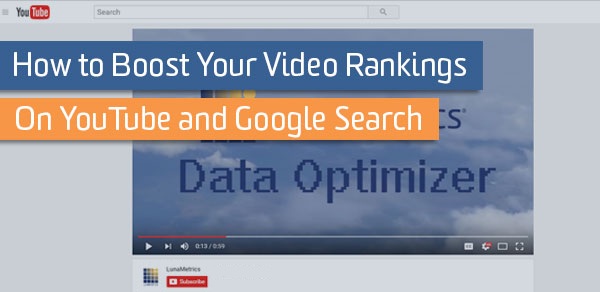Connect with us
Recent Posts
-
Video Rankings – How to Push Up to the Top

Videos now show in rankings on Google and other search engines. How do you manage to push your video up the ranks? Many people don’t realize that YouTube remains ahead of Yahoo! in the No. 2 spot behind Google, when it comes to search, according to
comScore.
Some videos rank well on Google but not YouTube. Why? Google is the number one priority for organic traffic for many webmasters, and SEO is the prime way to move up the rankings. Lots of webmasters don’t even bother learning about tactics that might help with other engines, and this is a mistake when it comes to YouTube. Some videos show up in Google and others don’t, because what triggers a video result in universal search is complex.
Web search has the most search volume. YouTube videos with large numbers of views and comments on YouTube don’t always trigger a Google universal search result, with that honor going to a lesser watched video, and Matt Cutts says “…it could be that this one has more PageRank, and that’s why it outranks it.” It comes back to links, as it always seems to with Google.
Tags are still the most important content elements on a YouTube page – meta title tags, meta description tags, and meta keywords tags. These are all translated by YouTube into HTML elements on the video view page. Even though Google is developing technology that can index Flash and the content of videos, text is still the main way that indexing is determined.
If you want Google and YouTube to know what your video is about, you MUST optimize the title, description, and tags. You can even add a transcript to the description or take advantage of YouTube’s annotation feature to add captions or subtitles, increasing the available HTML for Google to crawl.
YouTube’s ranking algorithm is a mystery, just like Google’s, but it is fairly clear that these factor in: embedding, ratings, play lists, commenting, sharing or favoriting, channel views, subscribers and inbound links. The age of the video also seems to have some impact, as well as flagging (adverse effects from flagging).
Making a video rank well on Google is different than making it rank well on YouTube, however – Google doesn’t seem to count embeds as links – which most people would feel that they should count. After all, strong back links stand as Google’s most important indicators of value. This means you should strive to obtain keyword-rich anchor-text links from relevant, reputable places on the web, and give your video some honest to goodness PageRank.
The fastest way to do this? Social media. Just like any other link driving campaign, social networking can get your video out there, and when it comes to something going viral, a video has a good chance – people love videos. Digg, Reddit, Buzzfeed, Sphinn – all of these can cause a skyrocketing in your videos popularity, and get you moved up the Google SERPs chain fast. If you can get picked up by a major blog, you’ll get even more face time on page one.
Bottom line? Use both SEO for content, tags, linking and social media to get your videos to rank well.
Recent Posts
-
What are Top 2020 SEO Trends...
1.The ERA Of VOICE SEARCH Hello, 2020! Long gone are the days when we used to head over to the search engines on our desktops and
Read More -
Why Is SEO Super-Duper...
The year’s 2019! We have long laid our footsteps in this digital world. Did you know that more than 4 billion people al
Read More -
National SEO Services –...
Introduction about National SEO Services A National SEO service provider uses search engine optimization practice to enhance the
Read More






